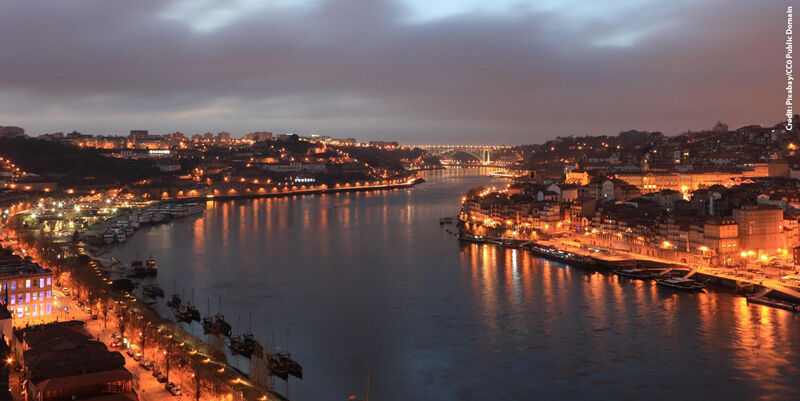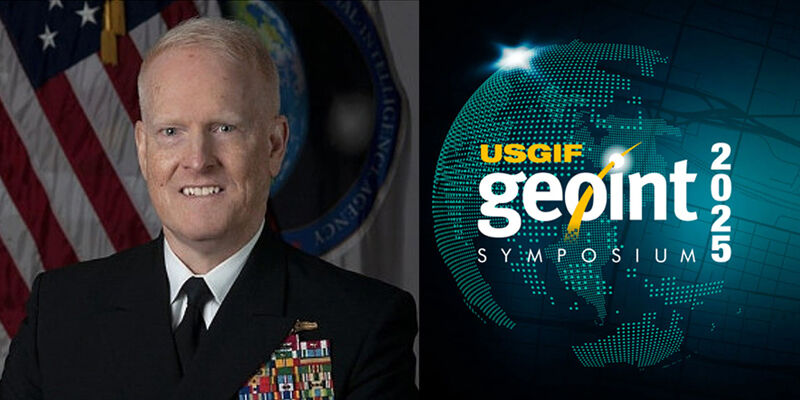Outdoor advertising is finally measurable in the Netherlands due, in part, to a new self-completion web-based survey technology and research methodology incorporating street-level mapping and GPS from UK software house Beacon Dodsworth.
The all new research and delivery system results in more meaningful comparisons between outdoor and other media; provides easier planning, buying, selling and executing of outdoor campaigns and ultimately showcases the medium as a sophisticated alternative to TV, print and radio.Clearly, it is impractical to stop people in their cars or on a bus to ask them about a poster they may have seen.Compared to other media, outdoor has always caused media planners a headache; because it is a passive medium1 it is notoriously difficult to measure (1).Add to this the fact that journeys made via multiple forms of transport are impossible to predict from such limited data as start and end points and we begin to understand why media planners have struggled to measure the impact of out of home (OOH) advertising.The Netherlands Challenge:Traditionally, OOH advertising would be measured using opportunity to see (OTS), which includes everybody that passes a panel regardless of whether they look at the panel or not. However the new research provides visibility adjusted contact (VAC) figures. This means the number of people who actually look at a panel and gives a much greater accuracy than OTS alone. VAC figures are always lower than OTS so it has taken time to get everybody in the outdoor industry globally to fund this new more accurate way of working but this is now seen as the best approach and central to the new ESOMAR guidelines on out-of-home media research, which this project comfortably fulfils.A consortium of Dutch outdoor specialists, advertisers and media agencies (2) asked Simon Cooper Associates in cooperation with Beacon Dodsworth to tender for the development of accurate out-of-home media measurement in the Netherlandsâ¦.So⦠How did BD research, map and measure the travel patterns and behaviours of the 66 Dutch cities with a population of over 75,000 people and get results that would give a meaningful and reliable country-wide insight into the reach and frequency of an outdoor advertising campaign?With some 85,000 out-of-home advertising panels to consider, this was no mean featâ¦The Project:The â¬3m research and resulting measurement system is capable of producing high-resolution street level mapping including points of interest and public transport, is compliant with specific demographic data, and delivered in a quick and easy-to-use software package with export and reporting capabilities.Beacon Dodsworth, in partnership with Simon Cooper Associates (SCA) and TNS NIPO, created a research methodology and delivery system centred around 4 key areas: traffic modelling, web-based mapping surveys, GPS processing and site classification (including eye tracking studies) with each facet of the research having its own challenges to overcome in order to ensure an inclusive and credible research architecture.Rooted in the original UK POSTAR methodology (for which BD provided the mapping modules), the consortium is completely independent of the UK body. The inclusive research architecture is considered far superior to the POSTAR model due to constant evolution and the development of non-roadside classification functionality.The Solution:In a world exclusive, Beacon Dodsworth developed a self-completion web survey (TripTrax) in conjunction with GPS modelling. The innovative survey (75% of respondents) maximises sample sizes at an affordable cost while GPS modelling (25% of respondents) provides representative data for the lifetime of a particular campaign.Accessed on demand, the interactive software creates routes in a quick and simple manner. Respondents enter a few locations and their chosen mode of transport and the software interpolates the route based on these points. Respondents can quickly edit their routes until the correct points are recorded.Tracking cyclists was where this section of the research got a little tricky as no comprehensive dataset for cycle routes in The Netherlands was easily accessible. Given that cycle journeys represent a large proportion of journeys in The Netherlands, it was imperative that BD created a three mode journey model that included vehicles, pedestrians and cyclists. The GPS survey used accelerometer readings, travel speed and âroute smoothness to address this.By designing the software to be simple enough to be intuitive, no user training is needed. Thanks to extensive checking and testing and the availability of interactive video help, even devout technophobes got to grips with the TripTrax software.No off-the-shelf browser-based application existed previously so Beacon Dodsworth created a system based on a bespoke version of Prospex, their sophisticated GIS mapping and analysis system. This works intuitively alongside purpose-built interactive route software.This approach allows detailed background maps showing points of interest such as railway stations, shopping outlets and tourist information as well as public transport lines (e.g. metro, tram etc.) ensuring ease-of-use and aiding navigation.Traditional models have previously relied on expensive face-to-face surveys.Because no interviewer is needed, TripTrax reduces costs and ensures a larger sample size for your money. Experience dictated a minimum sample size of 200 respondents per city region which ensured a mix of males and females in a number of age breaks.Sophisticated audience profiling with traffic modellingâ¦Marketers need to know the cumulative effect of a number of advertising panels over a given period of time, not just their dimensions and locations.The travel survey, therefore, includes detailed information on demographics, exposure to other media, shopping habits and the use of public transport etc. providing an in-depth understanding of the types of people that see the various poster formats.To ensure a comprehensive VAC, traffic-flow is calculated using several key datasets: last recorded visits in the web-based travel survey; measured traffic flows published by government and local councils and pedestrian footfall and usage data at public transport locations.Ensuring accurate and reliable data with GPS Processingâ¦To ensure accurate and efficient location and mode of transport calculation, handheld GPS units (provided by MGE Tsjech) are also used in the methodology.The devices measure location and speed of travel to determine the precise coordinate of the device and the method of transportation used (for example, if the device records a pause every couple of minutes, it is likely the recipient is travelling by bus).The GPS processing raised some interesting challenges for BD to overcome. As the device relies on an active connection with a satellite, processing had to be sophisticated enough to account for gaps in data (for example if the connection with the satellite is lost due to tall buildings etc).Beacon Dodsworth are only the second company in the world to offer this level of processing for GPS.The combined approach of web-survey and GPS modelling ensures that data collected is accurate and reliable allowing credible comparisons with other media.User-friendly mapping module with delivery system mappingâ¦To give users the ability to build poster campaigns using various demographic and geographic tools, Beacon Dodsworth created a mapping module to interface with the SCA developed CAFAS system (3).The system embodies the modelled data from the research and calculates cover and frequency analysis. By adding a unique mapping module to this software, this data is instantly visualised and hotspots identified in real time.The outcome:The web-mapping, because of its use of exclusive new technology ensures a user-friendly experience and an accurate measurement of the medium.The research, comprising both roadside and non-roadside data, is more reliable. Additionally, increased sample sizes, reduced field costs, more accurate reporting and the opportunity to obtain meaningful comparisons between outdoor and other media means that more people use outdoor advertising in the Netherlands.The improved research and advanced delivery systems facilitates easier planning, buying, selling and executing of outdoor campaigns.Through more accurate campaign modelling and better targeting, the research and delivery system will boost the Dutch outdoor industry in terms of both revenue and media use by presenting outdoor as a true, measurable and sophisticated alternative to print, TV or radio.Questions on the Web based mapping interview methodology and the GPS methodology should be addressed to Beacon Dodsworth.All questions on the Survey and results should be addressed to Platform Buitenreclame Exploitanten.Footnotes:(1) Outdoor is considered a passive medium as people do not actively seek to view the advertising.(2) JIC - Joint Industry Committee, consisting of The Platform Buitenreclame Exploitanten (PBE â Dutch Outdoor Association comprising Hillenaar ClearChannel Outdoor Advertising, JCDecaux and CBS Outdoor), Interbest, Centercom, Brouwer& Partners, Azero, MMD, OVMedia, Triple Media in close cooperation with BVA (Advertisers Association) and Platform MediaAdviesbureaus (PMA â Media Agencies Organisation).(3) CAFAS (Coverage and Frequency Analysis System) is the outdoor measurement system on which the resulting Netherlands system is based. CAFAS is currently in use in Norway, Finland, Sweden and Ireland.Notes and Terminology:* Coverage (also sometimes expressed as Reach) of a campaign is the number of individuals in a population who have seen the advertising at least once. Sometimes it is expressed as a percentage of a population, other times it is expressed as a direct number. For example, a campaign could have covered 47% of the adult population or it may be reported that the campaign reached 250,000 15-245 year old adults.* It will be realised that when a large population has been covered by a medium like posters, some people will have seen the campaign only once, but some will have seen it many times, and frequent travellers many many times. If we calculate the average number of times the average individual has seen the campaign then we call this the average frequency.* OTS (Opportunity To See) in the roadside environment is the traffic flow past a poster location adjusted for poster orientation or direction* VAC (Visibility Adjusted Contact) for a poster is the OTS reduced using the probability based visibility model. This takes into account the posterâs physical characteristics such as size, location to the road, lighting etc.
For more information visit:
Subscribe to our newsletter
Stay updated on the latest technology, innovation product arrivals and exciting offers to your inbox.
Newsletter

